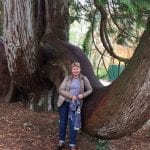Discovering Sri Lanka
I’ve had a desire to go to Sri Lanka ever since I met with the Sri Lankan Tourism Board representative in our office. Even though I was fascinated with the information she was imparting, I still had no idea what to expect from this country, newly reopened to tourism after a long civil conflict.
What I found out is that, without expectations, you can have a MUCH better time. I dearly loved my experience here with the culture, the people, the history and was pleasantly shocked to find most of the hotels we stayed at were of such 5* caliber.
Though you must transit through Colombo, as it has the major airport in the country, there is not a lot to see there, and the aggressive hotel building going on peppers the skyline with lots of construction cranes.
We stayed at the Galle Face hotel right at the waters edge. It began as a Dutch villa, but in 1894 was turned into a luxury hotel. There are Buddha statues everywhere here, and the population, mainly Buddhist, nicely mix their culture and religion.
We flew by private plane from Colombo to the heart of the country and home to the country’s ancient kingdoms. This is where the very old history of Sri Lanka lies, dating back to the 1st century BCE. We landed at an Air Force base and were taken to the medieval city of Polonnaruwa, one of the many UNESCO heritage sites in Sri Lanka. Polonnaruwa rose to prominence between the 10th – 12th centuries CE.
Leaving this site, we went to a huge elephant park, Kaudulla National Park. One of the many national parks in Sri Lanka, this one was exciting for the many babies within the herds. This area is also an important wetlands, supporting the painted stork and the spot billed pelican.
That night we stayed at Jetwing Vil Uyana, a very large and meandering resort with individual villas. The views differ depending on location, and can be paddy, forest or marsh. Forest view is best as you are in jungle. This was my villa location.
You can see many huge and colorful lizards and monitors around this property. There is diverse monkey population and birds. The hotel is beautiful and a great location for touring this area.
Continuing on the next morning to one of the country’s highlights, we arrived at Sigiriya, another UNESCO world heritage site. Climbing to the top is a 1200-step march, and not for the faint of heart. Steps are worn and crooked in some areas, while other stairs are just bolted into the side of the rock. This was a fortress of an ancient prince who left his family and built this rock-top fortress to protect himself.
There are beautiful gardens as well as ruins in the park surrounding Sigiriya. At 1,000 steps you reach the lion’s paws, still very much intact, and what remains of what used to be a huge, carved lion.
Following Sigiriya, we moved on to Kandy. This was the last bastion of Buddhist power against the invasion of foreigners.
On the way to Kandy we stopped at Dambulla. Out of the way rock formations that now house caves with Buddha statues and ancient cave paintings that are still very much intact. This started out as a sanctuary for one of their kings in the 1st century BCE. Later the caves were turned into temples.
Some of the very visible frescoes are 2000 years old. Not only do the caves depict Buddha’s life, but Sinahlese history as well.
Moving on, we visited a private spice garden and learned about the ayurvedic use for everything they grow. This is very special and the Kandy area is known for all the spice gardens. One is not to be missed.
That night we stayed at Kins Pavillion (one of my favorite hotels on this trip) in the residential area in the hills overlooking Kandy.
We were entertained by the world-famous Kandy dancers who offer something very different from the Balinese, Thai and other cultures of S.E. Asia.
While in Kandy we were taken to the Temple of the Tooth, a major Buddhist site that is purported to hold one of the Buddha’s teeth.
There is a festival every year at full moon in July or August (each year must be checked) where the monks will bring out the tooth in its hermetically sealed protection and parade it through Kandy on the back of an elephant. It’s a very important festival in Sri Lanka.
From Kandy we took the “best” train down to the tea plantation hill country. Their best train is still very limited in comfort and service, but it was a beautiful route going past waterfalls on one side and deep lush valleys on the other. Upon arrival in Hatton, we were transported to the Relais and Chateaux property called Tea Trails.
This is made up of five heritage tea planters homes spread out over the area. Each bungalow is its own hotel. This is a place of serenity and verdant beauty. Castlereagh Lake is surrounded by the most beautiful scenery I’ve ever seen. This area is a must for Sri Lanka and Tea Trails, a member of the 5* deluxe hotel company.
Accompanying staying at Tea Trails, you get a tour of the tea factory to see exactly how tea is made from the picking of the leaves to into your cup.
The very famous Sri Lankan brand, Dilmah, comes from this area and it’s their factory and plantation that we toured.
You can buy Dilmah on Amazon.
Moving on to the very south coast, we had another National Park on our agenda – Yala, one of Sri Lanka’s largest. This park is known for leopards, sloth bear, elephants, wild parrots and many other birds. What you need to know when booking Yala is what blocks are open while you’re there.
There are five park blocks and not all of them are open all the time. While we were there in Oct., block 1 was closed. This is the block where most of the leopards can be found, and where they are used to vehicles and humans. We went to block 5 and found no leopard.
We did see elephants, birds and a python that had just swallowed a spotted deer. This was a first for me. It was also leopard mating season which was another reason none were to be found. Those are the chances you take on safari. These national safari parks are not like Africa, so the lower the expectations of what you’ll see the better you’ll enjoy the safari.
There are no accommodations in the park. The closest you’ll get is Leopard Trails Safari Park; tented accommodations in a bush type of setting.
We stayed at a large, group tour type of hotel called JETWING YALA. I don’t recommend this property. But, animals can be found around here. I spotted wild boar, water buffalo and, of course, monkeys (which are everywhere). This hotel sits in the dunes at oceans edge and is very family oriented.
The place to stay in this area that was not yet opened when we were there is the Wild Coasst Tented Lodge. With architecture and interior designed by two young Dutchmen, the property is a marvel in eco-technology; serene and non-intrusive to the senses. One would never, ever regret a stay at this most unusual, most special property.
Continuing our move across the southern coast, our next and last stay was at Cape Weligama. Sitting on a rise over the navy and turquoise Indian Ocean, this property should be the last place one stays in Sri Lanka – saving the absolute best for last (along with Wild Coast Tented Lodge). This is another villa property with three separate villas sharing a huge pool. Villas are named after famous, contributing people; i.e. Pablo Neruda and Ibn Battuta. They are immensely large, with patios almost as large as the inside. The food here is amazing, too.
Prior to our departure from this rich and warm country, we got the chance to explore and shop in the Southern Coast walled town of Galle.
There is an Aman hotel here, Amangalla, where we had afternoon tea and did a site inspection. It’s a very historic hotel within the walled fort.
Typically Aman with stark interiors. Great location in the town.
The thing to do in Galle is to sit on the fort walls and watch sunset.
The town is charming, shopping is great and the sunset was perfect. Galle must be a stop on any Sri Lankan adventure.
To sum up – Sri Lanka has made it into many travel publications Top 10 lists of where to travel in 2018.
I agree with this assessment. It is exotic without being uncomfortable.
The very north of the country and, at the moment, the east coast are not set up for tourism. The Tamils and Sinhalese, as well as Muslims, exist peacefully on this small island.
The east coast is being slowly developed as I was told there are beautiful beaches there.
I highly suggest this destination before it turns into a situation like Iceland.



